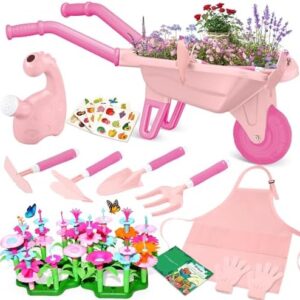Imagine stepping into your backyard and being greeted by a symphony of chirping birds, buzzing bees, and fluttering butterflies. This is the magic of a wildlife garden, a haven for local wildlife populations that need our help more than ever.
In today’s world, urbanization and industrialization have left many wildlife species struggling to survive. As habitats disappear and resources dwindle, it is up to us to create spaces where wildlife can thrive. This is where gardening for good comes in.
Wildlife gardens are not just a pretty addition to your yard – they are essential sanctuaries for birds, insects, and other animals that call your neighborhood home. By providing food, water, shelter, and breeding opportunities, we can support and nurture these populations, ensuring their survival for generations to come.
One of the key ways wildlife gardens support local wildlife populations is by providing a diverse and abundant food source. By planting a variety of native plants that produce seeds, fruits, and nectar, you are creating a buffet for birds, bees, and butterflies. These plants not only provide sustenance for wildlife, but also attract pollinators that play a crucial role in our ecosystem.
In addition to food, wildlife gardens also offer vital sources of water. By incorporating birdbaths, ponds, or even just a shallow dish of water, you can provide a much-needed resource for thirsty animals. In the hot summer months, water can be scarce for wildlife, so having a reliable source in your garden can make a big difference.
Shelter is another essential component of a wildlife garden. By planting dense shrubs, trees, and grasses, you create hiding spots for animals to seek refuge from predators, harsh weather, and other threats. Birdhouses, bat boxes, and insect hotels are also great additions to provide safe nesting sites for wildlife.
Breeding opportunities are also crucial for supporting local wildlife populations. By creating a welcoming environment in your garden, you can encourage animals to reproduce and raise their young in a safe and secure space. Bird species, in particular, will benefit from the presence of nesting materials and protected nesting sites.
But the benefits of wildlife gardens go beyond just supporting local wildlife populations. They also offer us a connection to nature, a sense of peace and tranquility, and a deeper understanding of the world around us. Watching a butterfly flit from flower to flower or hearing a bird sing its morning song can bring joy and wonder into our lives.
Creating a wildlife garden may seem like a daunting task, but it doesn’t have to be. Start small by planting a few native plants that are attractive to wildlife. Make sure to choose plants that bloom at different times of the year to provide a continuous food source. Consider incorporating a water feature or habitat structure to enhance the diversity of your garden.
Remember to avoid the use of pesticides and herbicides in your wildlife garden, as these chemicals can harm wildlife populations and disrupt the delicate balance of the ecosystem. Instead, embrace natural pest control methods like companion planting, beneficial insects, and hand removal of pests.
Lastly, be patient and observant in your wildlife garden. Take the time to watch and learn from the creatures that visit your space. Keep a journal of the wildlife you encounter and the changes you see over time. By being a steward of your garden, you can make a positive impact on local wildlife populations and contribute to the health of our planet.
Gardening for good is not just about beautifying our outdoor spaces – it is about creating a sustainable and nurturing environment for all living beings. By supporting local wildlife populations through wildlife gardens, we can play a vital role in protecting and preserving the natural world around us. So, roll up your sleeves, grab your gardening gloves, and let’s make a difference for wildlife in our own backyards.






